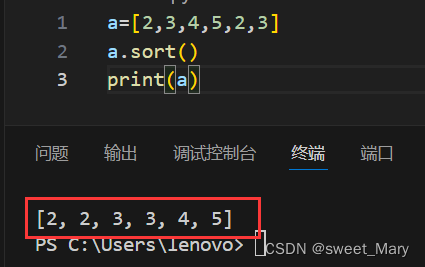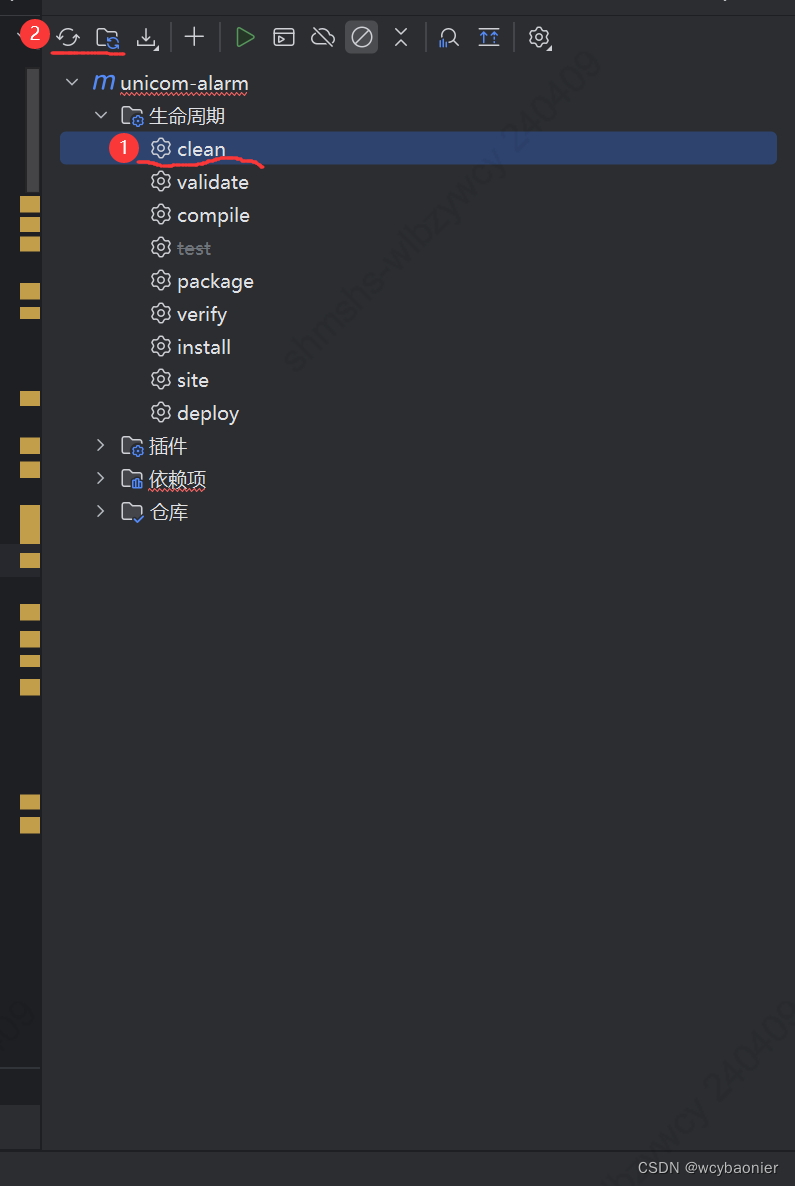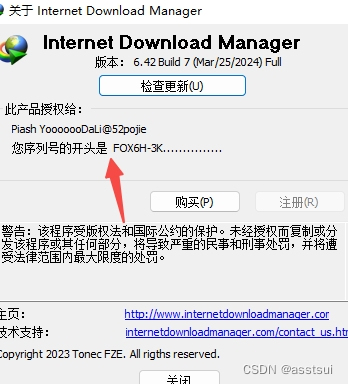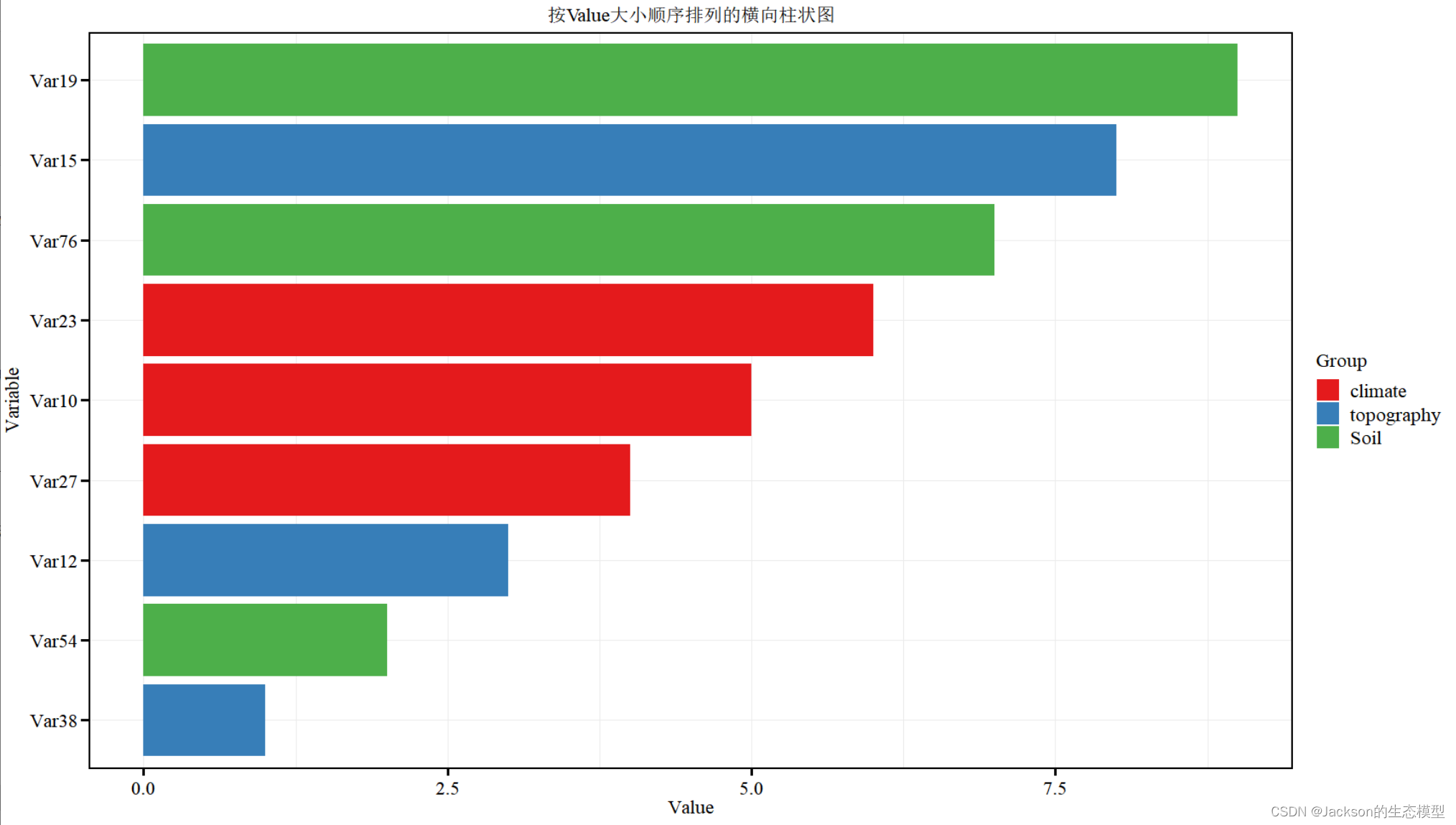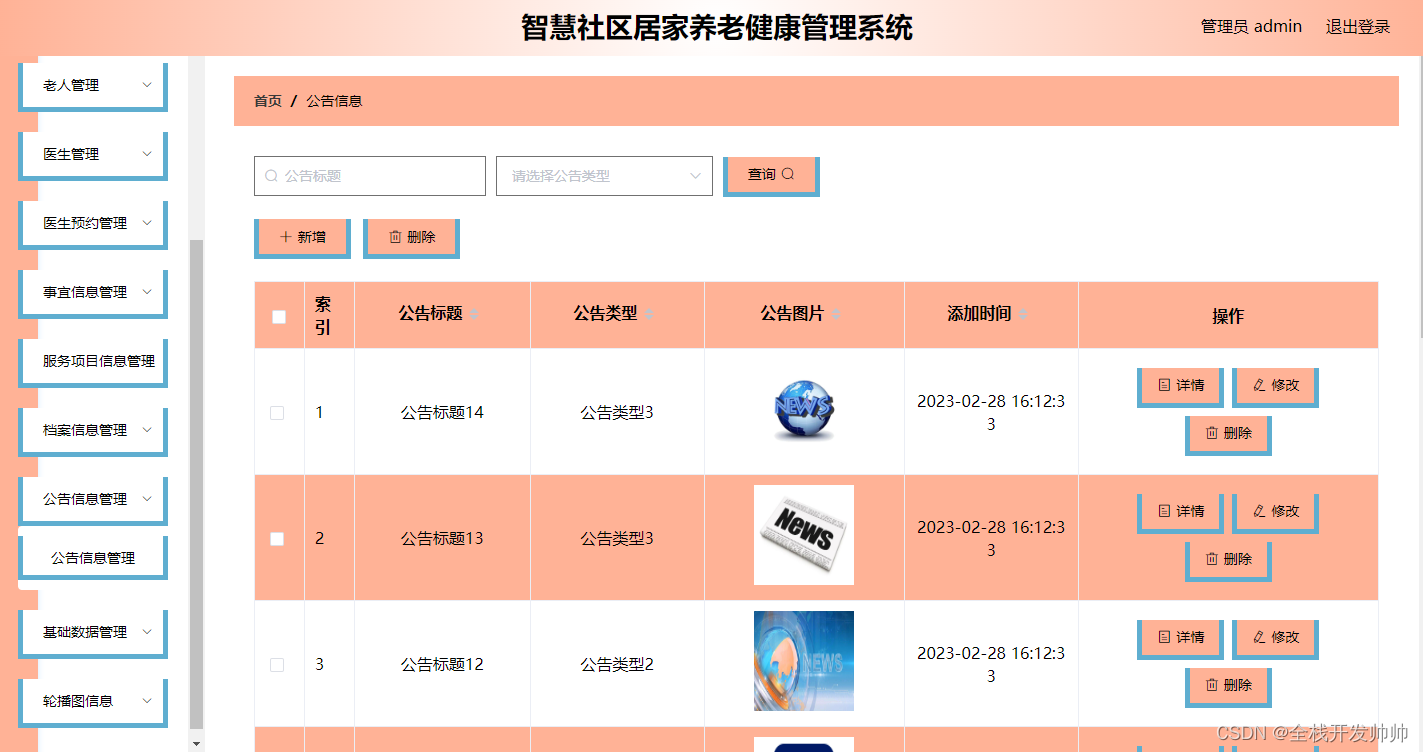背景
有个抓包结果被加密了

1、寻找入口,打断点
先正常请求一次,找到需要的请求接口。


寻找入口,需要重点关注几个关键字:new Promise 、new XMLHttpRequest、onreadystatechange、.interceptors.response.use、.interceptors.request.use
入口这一步很关键,入口找好了,大大降低了下面调式的工作量。
2、调试
这一步目的:请求参数是怎么加密组装的,响应参数是如何解密的。
这个 过程比较繁琐,慢慢来,F11进入关键函数后,再使用F10 一步一步往下执行。
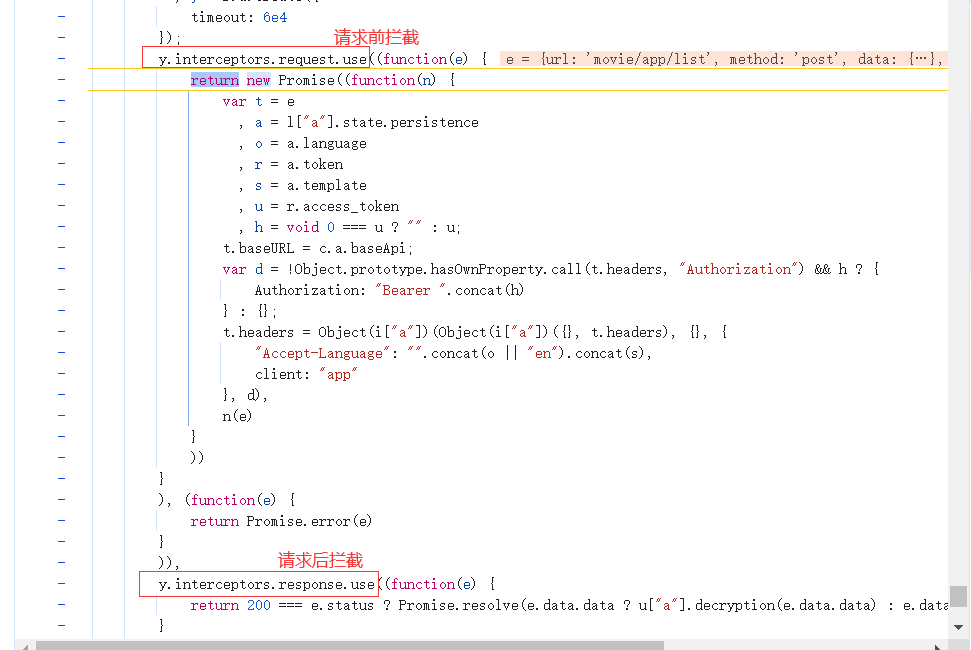
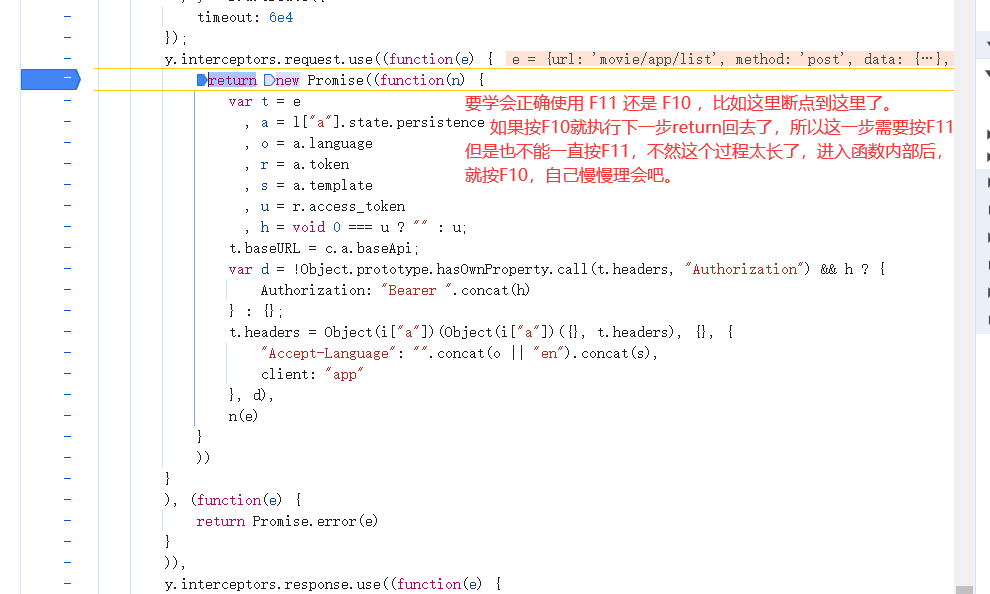
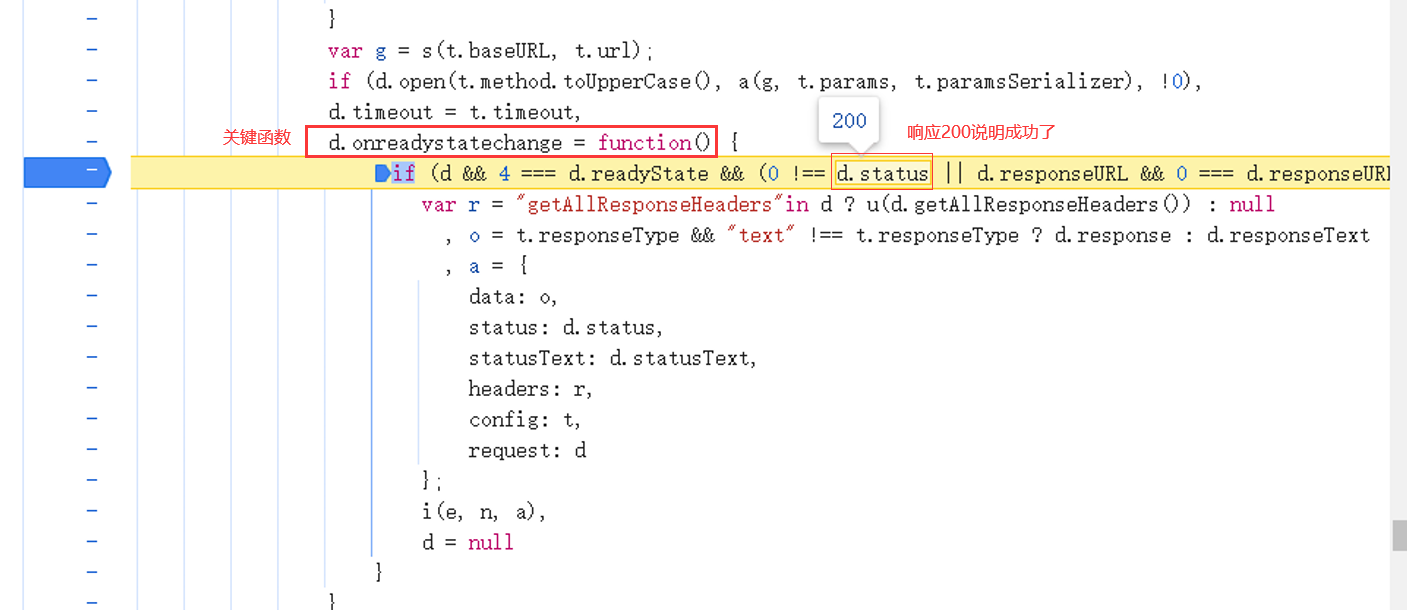



这里响应参数被base64编码了两次
验证一下

3、代码验证测试
package com.study;import com.fasterxml.jackson.databind.ObjectMapper;import javax.crypto.Cipher;
import javax.crypto.spec.SecretKeySpec;
import javax.net.ssl.*;
import java.io.ByteArrayOutputStream;
import java.io.IOException;
import java.io.InputStream;
import java.io.OutputStream;
import java.net.URL;
import java.nio.charset.StandardCharsets;
import java.security.cert.CertificateException;
import java.security.cert.X509Certificate;
import java.util.Base64;
import java.util.Map;public class Test {public static void main(String[] args) throws Exception {String key = "8afccde05b2206ab681c65d6156b194a";String url = "https://127.0.0.1:443/movie/app/list";String param = "{\"pageParam\":{\"current\":1,\"size\":10},\"searchParam\":{\"movieType\":\"xxxxx\"}}";byte[] bytes = sendPost(url, param);ObjectMapper mapper = new ObjectMapper();Map<String, String> result = mapper.readValue(new String(bytes), Map.class);String data = result.get("data");String s = decryptECB(data, key);System.out.println(s);}/*** AES ECB 解密* @param message 密文* @param key 密匙* @return 解密后数据*/public static String decryptECB(String message, String key) {final String cipherMode = "AES/ECB/PKCS5Padding";try {// 一般这里只会Base64解码一次,但是这次比较特殊,数据被编码了2次。所以需要解码2次。byte[] messageByte = Base64.getDecoder().decode(Base64.getDecoder().decode(message));byte[] keyByte = key.getBytes(StandardCharsets.UTF_8);SecretKeySpec keySpec = new SecretKeySpec(keyByte, "AES");Cipher cipher = Cipher.getInstance(cipherMode);cipher.init(Cipher.DECRYPT_MODE, keySpec);byte[] content = cipher.doFinal(messageByte);return new String(content, StandardCharsets.UTF_8);} catch (Exception e) {e.printStackTrace();}return null;}/*** 发送POST请求*/public static byte[] sendPost(String url, String params) {HttpsURLConnection con = null;InputStream is = null;try {con = (HttpsURLConnection) new URL(url).openConnection();// 绕过证书验证SSLContext sc = SSLContext.getInstance("SSL");sc.init(null, new TrustManager[]{new MyTrustManager()}, new java.security.SecureRandom());con.setSSLSocketFactory(sc.getSocketFactory());// 绕过验证主机名con.setHostnameVerifier(new MyHostnameVerifier());con.setRequestMethod("POST");con.setDoOutput(true);con.setDoInput(true);con.setUseCaches(false);con.setConnectTimeout(5000);con.setReadTimeout(15000);con.setRequestProperty("Content-Type", "application/json;charset=UTF-8");con.setRequestProperty("User-Agent", "Mozilla/5.0 (Windows NT 10.0; Win64; x64) AppleWebKit/537.36 (KHTML, like Gecko) Chrome/103.0.0.0 Safari/537.36");if (params != null) {OutputStream outputStream = con.getOutputStream();outputStream.write(params.getBytes(StandardCharsets.UTF_8));outputStream.close();}int len;byte[] buf = new byte[4096];is = con.getInputStream();ByteArrayOutputStream baos = new ByteArrayOutputStream();while ((len = is.read(buf)) != -1) {baos.write(buf, 0, len);baos.flush();}return baos.toByteArray();} catch (Exception e) {e.printStackTrace();} finally {try {if (is != null) {is.close();}if (con != null) {con.disconnect();}} catch (IOException e) {e.printStackTrace();}}return null;}static class MyTrustManager implements X509TrustManager {public void checkClientTrusted(X509Certificate[] chain, String authType) throws CertificateException {}public void checkServerTrusted(X509Certificate[] chain, String authType) throws CertificateException {}public X509Certificate[] getAcceptedIssuers() {return new X509Certificate[]{};}}static class MyHostnameVerifier implements HostnameVerifier {@Overridepublic boolean verify(String urlHostName, SSLSession session) {return true;}}
}
